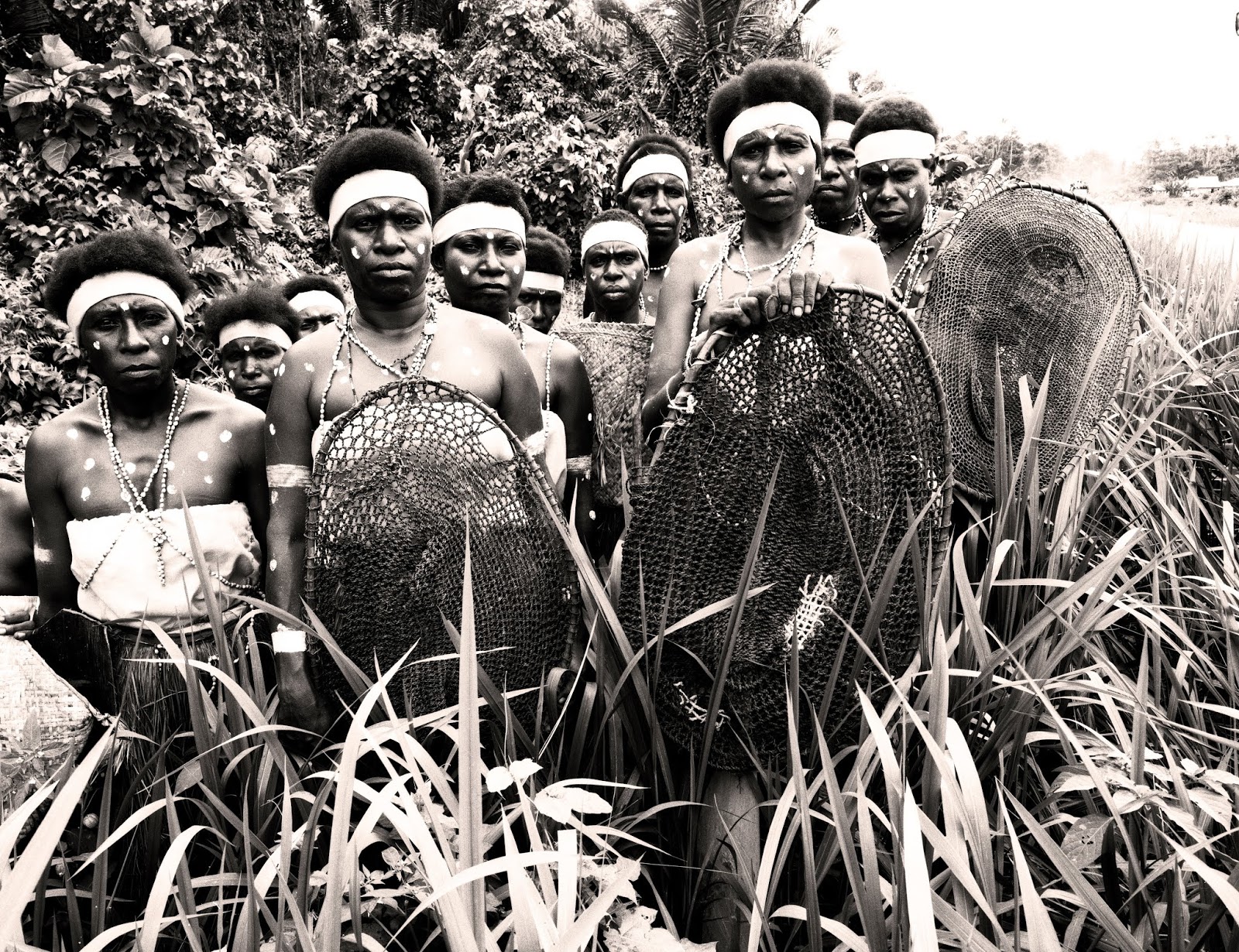The Mother of The Forest
 |
| Women of Kamoro Tribe, taken by Poriaman Sitanggang (2003). |
In many developing countries, people depend directly on forest resources for food security and household income. Take example in Indonesia, according to FAO around 80-95 millions of people are directly dependent on forest resources. It’s clear that forest is inseparable to many people’s life, as it provide food and income for many households. However, the reality is when we compared with men, women are frequently disadvantaged (for a range of interrelated cultural, social, economic and institutional reasons) in their access to and control over forest resources and in the economic opportunities available to them (FAO, 2014).
Multiple studies proved that women are generally under-represented in forest user groups, such as village forest committees and community forest associations. A Survey by the Poverty Environmental Network Study from the Center of International Forestry Research (CIFOR) found that women in more than half of the around the 8,000 households did not participate in forest decision-making at all (Rigby, 2018). The lack of women representation and participation in these committees, leads to women’s exclusion in forest management and caused an uneven distribution of economic benefits for them as well. For example, in Madadan, Tana Toraja, Indonesia, in the implementation of Social Forestry Program, women were not represented as one of the decision-makers in the Social Forestry working group. Thus, the lack of recognition by men of the validity of women’s participation, resulted in gender-biased program that benefit men only (Leith & Cummings, 1993).
Women have always play important ecological roles and use their valuable knowledge of natural resources in forest management. For example in Africa, studies showed that making women as key players in the management of forest led to significantly improve household nutrition, and the ready availability of a diverse range of edible products including fruits, vegetables and insect (Barrow & Mlenge, 2003). Also in India and Nepal, studies showed that when women participate in forest management and decision-making processes at the community level, leads to a better forest conservation (Agarwal, 2009). These cases proved that women participation ensure the well-being of food security in their household, as well as the forest conservation. Thus now the question is how do we increase women participation in forest management?
Here are several suggestions that can be done to increase women participation in forest management. First, we need to enhance the understanding of inclusivity within the community. This can be achieved by giving access of education, socialization and trainings among the people. Second, to ensure women’s participation in the working groups of the forest management, we can start by creating comfortable platform for them to share their ideas, views and aspirations about the forest. Third, we need to empower women through horizontal and inspirational learning, in which the women can learn and share their experience in forest sector around the nation and the globe. Fourth, we need to design forestry and agroforestry programs that acknowledge women as the beneficiaries of the forest. Fifth, we need to support value chain activities by working with the private sector that can use the forest products collected by women. Lastly, on the government level, we need to integrate gender into policy frameworks and allocate budgets to support women’s participation in forest management.
Women's relationship with the forest are closer than what we imagined. Furthermore, by empowering women’s nurturing side, we may see positive outcomes of the forest as well. Thus, if we exclude women’s knowledgeable voices of the forest and disregard their participation, we will loose their valuable contributions in forest management.Women are the mother of the forest, hence by increasing women participation in forest management, we will have huge opportunities in ensuring the forest sustainability.
Stay Awesome, Be Riot!
Love,
References
Agarwal, B. (2009). Gender and Forest Conservation: The Impact of Women's Participation in Community Forest Governance. Ecological Economics Vol. 68, No. 11, 2785-2799.
Barrow, E., & Mlenge, W. (2003). Trees as Key to Pastoralist Risk Management in Semi Arid Landscapes in Shinyanga, Tanzania and Turkana, Kenya. International Conference on Rural Livelihoods, Forest and Biodiversity (p. 17). Bonn: CIFOR
FAO. (2014). Women In Forestry: Challenges and Opportunities. Romes: Food and Agriculture Organization of The United Nations.
Leith, J., & Cummings, F. H. (1993). Social Forestry in Tana Toraja, Indonesia: The Participation of Women in Decision Making. Canadian Journal of Development Studies, Special Issue, 211-228.
Rigby, J. (18, June 2019). Can REDD+ Bring More Women into Forest Conservation. Retrieved from Mongabay: https://news.mongabay.com/2019/06/can-redd-bring-more-women-intoforest-conservation/
Barrow, E., & Mlenge, W. (2003). Trees as Key to Pastoralist Risk Management in Semi Arid Landscapes in Shinyanga, Tanzania and Turkana, Kenya. International Conference on Rural Livelihoods, Forest and Biodiversity (p. 17). Bonn: CIFOR
FAO. (2014). Women In Forestry: Challenges and Opportunities. Romes: Food and Agriculture Organization of The United Nations.
Leith, J., & Cummings, F. H. (1993). Social Forestry in Tana Toraja, Indonesia: The Participation of Women in Decision Making. Canadian Journal of Development Studies, Special Issue, 211-228.
Rigby, J. (18, June 2019). Can REDD+ Bring More Women into Forest Conservation. Retrieved from Mongabay: https://news.mongabay.com/2019/06/can-redd-bring-more-women-intoforest-conservation/

Comments
Post a Comment